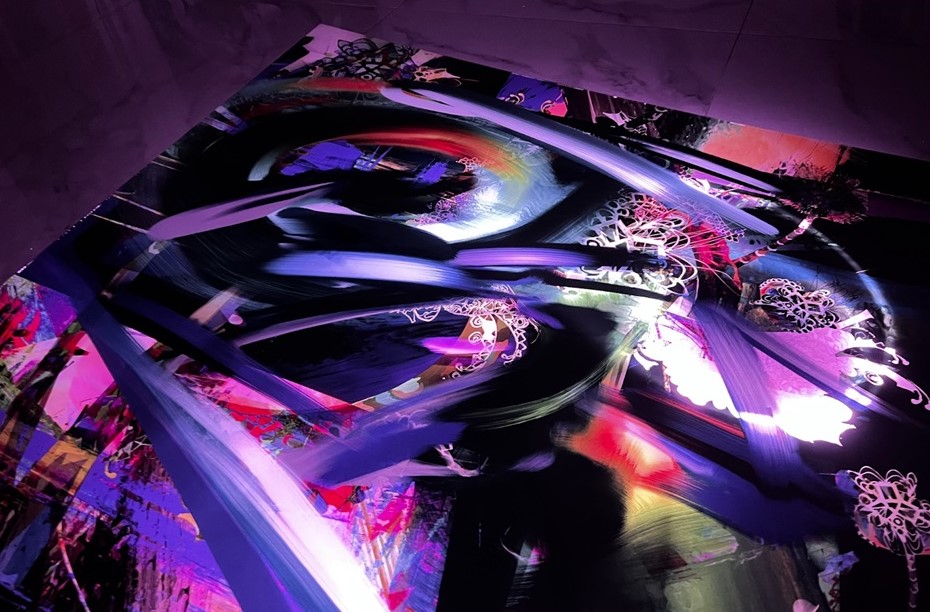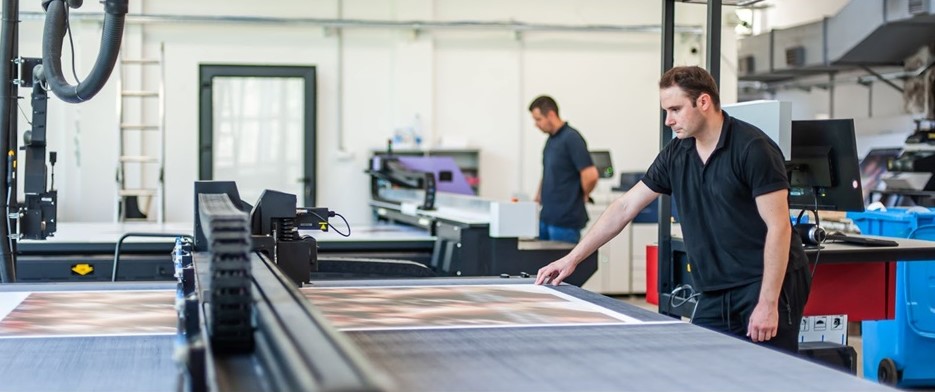Блог
Materialization of Digital Fine Art. Transparent Polymer Canvas

Material in art is not just a means to achieve the final product; it is a starting point that provokes thoughts, experiments, and new ideas. - Anish Kapoor
In a world where the boundaries between technology and art are becoming increasingly blurred, my practice unites these two spheres by utilizing polymeric material to embody digital painting in the physical world. This article reveals how polymethyl methacrylate (PMMA), better known as acrylic glass, becomes key to preserving the depth and brightness of digital works when transferring them to canvas. Nonetheless, aspects of this process hide their challenges, difficulties, and advantages.

Technical reference: PMMA is a synthetic polymer with high aesthetic and optical properties, scratch-resistant, and holds its shape well.
Density 1.18 g/cm3
Melting point 160 °C
Bending temperature under load (1.8 MPa) 95°C
Stability of properties at extremely low moisture absorption of 0.3%
The recommended operating temperature is up to 55°C
Relevance of the task
Designers and artists are familiar with the problem of loss of color intensity and color shift when printing computer images on paper or canvas. This problem typically goes unnoticed in outdoor advertising and marketing tasks. However, in the relatively new genre of digital painting, where the main idea of the work can be embedded in the subtlest shades and the play of light, the loss of embedded color parameters - brightness and saturation - is a disaster. The presentation of a digital painting as a physical object, printed in the intended size and in the right colors - is vital to me as an artist.
The main technical problem
The RGB color model of the monitor, which is based on the three main emitted colors - Red, Green and Blue, uses internal light emission. Unfortunately, printing in this format is not possible, because the ink does not have an internal illumination, as do the monitor's pixels. Therefore, printers work in CMYK format, adjusting color brightness by varying the percentage of the black ink layer. The color space of CMYK printing is much narrower than the monitor's RGB, which leads to the transformation of the original work into a new, often more boring and sluggish one. This aspect makes the high-quality output of computer painting into the gallery space extremely difficult. Next, we will consider successful attempts to break through sophisticated digital art into the real world.
Solution: transparent canvas
A few years ago, I found a solution by using a transparent polymer sheet (polymethyl methacrylate) to print pictures on. This printing technique allows for a live RGB effect as the sheet lets light through (sunlight like a stained glass window or interior lighting if hung on a wall). PMMA or Plexiglas is familiar in print shops, where it is used for light boxes. It is tough, has good ink adhesion, is impact resistant compared to glass, light and comfortable. But I have not yet found a high-quality artistic print on this material. I was amazed at the first results - the works glowed with new life, showing both the depth of color and the vibrancy of the colors in the right lighting. Seeing my works in the dimensions in which they were drawn was a new experience, even for me as an artist, since I work either with pieces within the size of the monitor or with a scaled-down version.
Size matters
One of the most striking aspects of working with polymers is the possibility of creating works of a large size. It changes not only the perception of the audience, but also the way I feel about my work.

Printing process
Being able to see my works in real size made me feel a new connection with them, as if they had taken on a life and story of their own. This process resembles the birth of a living being.
Perception and self-realization
Continuing my point, I want to share more about the emotional meaning of this experience rather than the technical aspects. I have come to think that a good print is the original work, while a digital file is more like a film that needs to be developed on photo paper. It was a strange experience to draw for years and finally see the originals of my works. The use of UV printing on a transparent polymer sheet not only solved the problem of color transfer, but also opened up new opportunities for artistic self-realization. This method allowed me to combine two worlds: analog and digital, demonstrating that technology can not only coexist with art, but also enhance its expressiveness and emotional depth. By using polymer as an element of the work, I not only share my vision, but also invite viewers to a deeper level of communication, where everyone can feel a unique connection to the work. The picture, due to the gloss of the front side of the letter, can feel colder and mental, protected by glare, but this is good for some abstractions. With a different position of the viewer - on the contrary, it will have depth, give space for immersion. At first, I was worried about how people would perceive my works in this format, this challenge to traditional ideas about art. I was surprised how positively my friends and acquaintances reacted to the work. Reflecting on my practice, I realized that the materialization of the digital format facilitates a greater dialogue between the artist and his audience.
 I am in the background of my painting. Larger prints radiate dominance and transform the entire space of the room
I am in the background of my painting. Larger prints radiate dominance and transform the entire space of the room
Ethical aspects of plastics
The art we create is inseparable from the tools and materials we work with. The use of polymethyl methacrylate for digital painting has become not just a technical solution, but a philosophy that allows art to overcome the boundaries between the virtual and the real, between the created and the felt. Staying on the professional topic of polymers, this is perhaps my first experience where plastic has provided a higher level of inspiration. We are used to treating polymers as an environmental problem, a problem of conscious waste management, or as a subject of work - economic efficiency, etc. My successful use of polymer in art not only opened up new opportunities for self-expression for me, but also showed the ethical beauty of this material, when polymer is at the service of beauty. It has allowed me to bring what I consider important to the physical world, broadening the horizons of my understanding of my own creations, self-actualization, and purpose.
